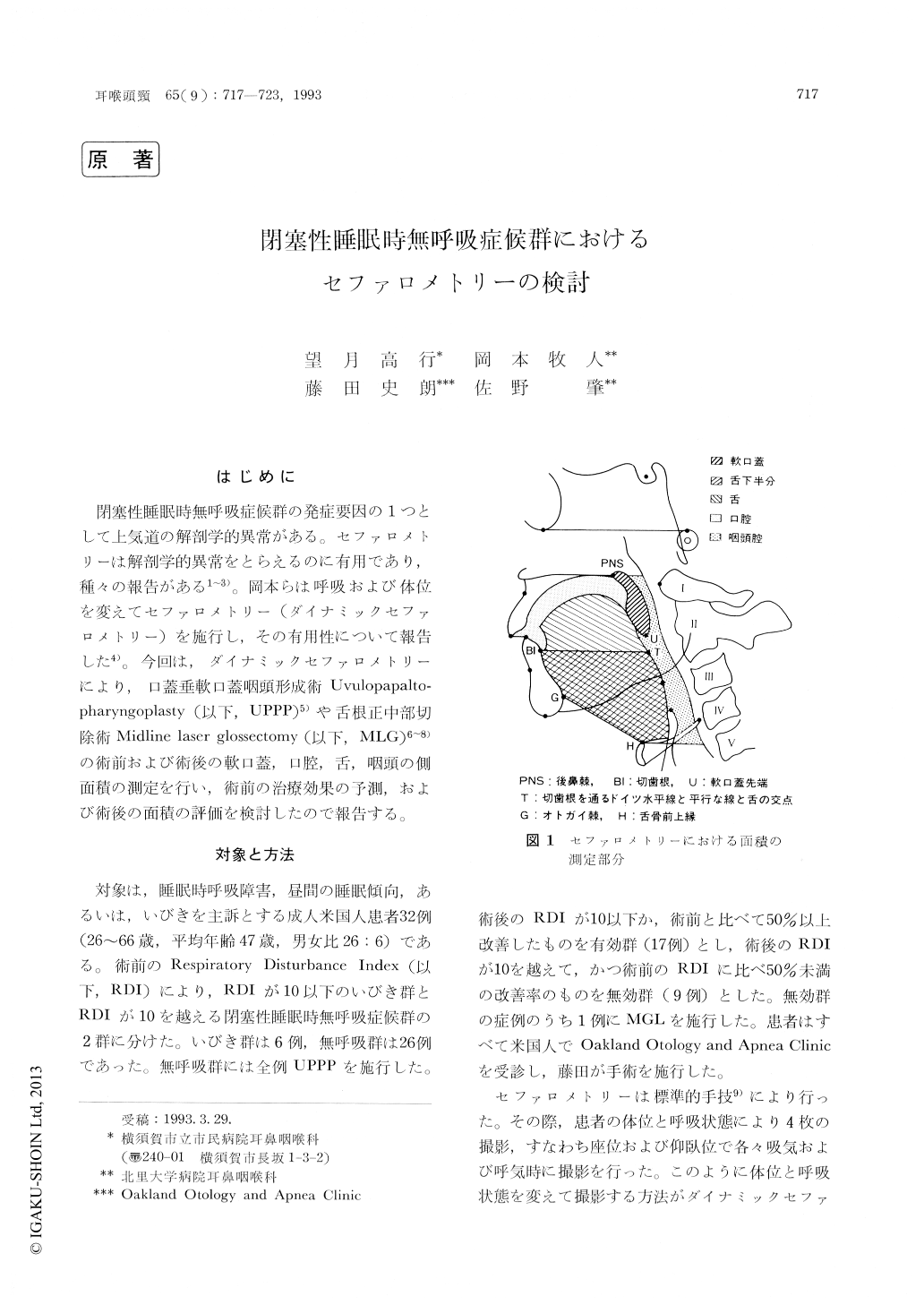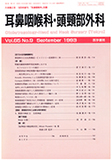Japanese
English
- 有料閲覧
- Abstract 文献概要
- 1ページ目 Look Inside
はじめに
閉塞性睡眠時無呼吸症候群の発症要因の1つとして上気道の解剖学的異常がある。セファロメトリーは解剖学的異常をとらえるのに有用であり,種々の報告がある1〜3)。岡本らは呼吸および体位を変えてセファロメトリー(ダイナミックセファロメトリー)を施行し,その有用性について報告した4)。今回は,ダイナミックセファロメトリーにより,口蓋垂軟口蓋咽頭形成術Uvulopapalto-pharyngoplasty(以下,UPPP)5)や舌根正中部切除術Midline laser glossectomy (以下,MLG)6〜8)の術前および術後の軟口蓋,口腔,舌,咽頭の側面積の測定を行い,術前の治療効果の予測,および術後の面積の評価を検討したので報告する。
Cephalometry is well-documented for its sim-plicity as a mode for measuring the morphologi-cal features of the lateral aspect of the upper airway and its usefulness in screening anatomical abnormalities in patients with obstructive sleep apnea syndrome.
In this study, we conducted dynamic cephalo-metry, measuring the lateral spaces of the soft palate, oral cavity, tongue, and pharynx and evaluating the preoperative predictability of the usefulness of UPPP and MLG and postoperative spaces. Presented here arc the results of this dynamic cephalometry. Our subjects were 32 adult patients with U.S. citizenship. Spaces of the soft palate, the whole tongue, and the lower half of tongue were significantly larger in the apnea group than in the snoring group. Our preoperative measurements revealed that the lingual space was larger and the pharyngeal space smaller in the UPPP non-responder sub-group than in the responder subgroup in the apnea group. These findings suggest that these kinds of cephalometric measurements are para-meter for predicting the usefulness of UPPP before surgery. In the UPPP non-responder subgroup, the space of the soft palate became smaller, but the pharyngeal space did not in-crease after surgery. In the MLG cases, the oral and pharyngeal spaces tended to increase, while the opposite seemed true of the space in the lower half of tongue.
While the measurement of such conventional parameters as distance and angle in cephalo-metry can effectively detect morphological ab-normalities mainly in skeletons, spatial measure-ment is effective for determining the condition of soft tissue. As such, combining these measure-ments made it possible for us to make a more thorough anatomical assessment of the upper airway.

Copyright © 1993, Igaku-Shoin Ltd. All rights reserved.


